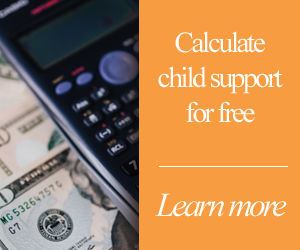The issues surrounding minors who are exploring gender transition and relabeling their identity are numerous when it comes to custody. Often these discussions involve political and religious arguments, and there are ever-evolving public policy concerns despite seemingly little thought given to the actual interests of the children in question.
The purpose of this article is to address some best practices for divorcing parents and their children, as all parties consider how to navigate divorce and address issues concerning transgender and non-binary children in relation to custody.
Starting with the Basics
Reviewing and using the proper terms and vocabulary is an essential starting point with your child. Using the correct terms signals acceptance and kindness. Every parent should strive for this, but it can be difficult when many terms are being introduced into these discussions. To start, the following definitions will provide a baseline:
Transgender or Trans – an adjective to describe someone whose gender identity differs from the sex assigned at birth. Transgender is also an umbrella term but is most often used to describe individuals who transition to the gender considered opposite of their gender assigned at birth (such as a trans woman or a trans man).
Non-Binary – a term used by those who do not describe themselves as fitting in solely with the category of male or female. This can include feeling like a combination of more than one gender (bigender), feeling like a completely different gender that doesn’t fit the binary system (third gender) feeling completely outside of the gender spectrum (agender), feeling like a different gender each day (genderfluid), or anything in between.
Gender transition – the process a person takes to bring themselves and/or their bodies into alignment with their gender identity. This may (but not always) include: informing friends and family, changing pronouns, changing identity and legal documents, and seeking medical interventions via medications and surgeries.
With some basic vocabulary addressed, it is no secret that divorce is stressful for parents and children who are encountering these themes in their daily lives. There seems to be several correlations between a child’s mental health concerns and their parents’ divorce. High conflict divorces have deep complications for minor children. High conflict typically refers to cases where the divorcing couple strongly disagree on how assets should be divided and how custody/visitation should be addressed. In a case where a child is transgender or gender non-conforming, the chances of a high conflict case can escalate quite quickly.
Laws on Custody of Transgender Children
There are two types of child custody that every parent should be aware of – physical and legal. The physical component of child custody addresses with whom the child lives, when the child will visit with the other parent, how holiday and school schedules will be handled, etc. The legal part of child custody addresses which parent has authority over selecting school options – public, private, or home school. Legal custody also concerns religious matters – where and if a child should attend church, synagogue, or other. Medical care is included in the legal child custody category.
As you can probably imagine, these issues get more complicated when a transgender child is involved. If parents disagree about their child’s care, whether it be over big life decisions like medical transition or their every day life like what kinds of haircuts the child can have or what clothes the child can wear, it can lead to an all out custody war.
The current legal “trend” and popular default concept is that both parents should have as close to equal time as possible when addressing physical custody and that the parents have “joint” physical custody. An even more dominant philosophy is the legal notion that BOTH parents should jointly share legal custody. This means that both parents need to be in agreement on medical care and mental health care for their children.
Best Practices for When Having Custody of Transgender Children
The World Professional Association for Transgender Health (WPATH) has issued and regularly updates a standard of care for how medical professionals and mental health experts can best care for their transgender patients. This is a great place to start if you are unsure of how to best care for your transgender or gender non-conforming child. Here is some of what is covered.
Experimenting With Gender
Many children experiment with their gender, but transgender children typically settle comfortably into trends and styles that aren’t normally associated with their gender assigned at birth. Their hair and clothing choices may change. The child may wish to use another name.
Although these steps are not permanent, it can be difficult for one or both parents to accept these choices made by their child or children. Experts suggest that parent(s) not overwhelm the child by discussing all the future implications, but rather just listen and support the child in the present and current time. Using a different name that your child has asked you to call them does not necessitate any other changes down the road and only proves that you care enough to support their autonomy over themselves.
Discussing Physical Transition
If a young person is committed to gender reassignment, prescription medications may be a natural step for them to request as they get older. Gender reassignment surgery may be discussed. These measures will result in lifelong health decisions – they impact reproductive health and shift the body in ways that are not easily reversible. However, for many transgender children and especially those who suffer with thoughts of self harm, these measures are often also life saving. It seems apparent that these discussions and steps be addressed as a child brings to light their desire to transition.
More advanced methods of transition like hormones or surgeries should be taken seriously by both parents when making decisions for minor children. All children should be thoroughly examined and treated by a mental health professional first to assess whether or not they are good candidate for these types of transition treatments as well as aid such children with any other unseen mental health difficulties.
There is much evidence that non-binary and transgender youths endure significant mental health issues compared to their peers, including suicidal thoughts and attempts. Giving them the support of a licensed counselor trained in issues of gender identity can steer children in navigating these hardships and help them decide whether or not transition is right for them.
What If My Child’s Other Parent and I Disagree?
To restate care recommendations from above, many medical experts urge parents to just be supportive of where their child is currently when it comes to their care. Allow children to express themselves. Focus on the child’s immediate needs. It is noted that many parents tend to focus on future issues. Such forward future thinking can result in anguish for your child, especially younger ones who do not understand their parents concerns. Experts encourage parents to focus on a child’s present and current needs and interests.
However, not every parent will agree with the people who have been studying this topic for decades. They don’t see it as custody of a transgender child because they don’t believe in the notion of people being transgender in the first place and may force the child to conform to how they want them to dress and behave under their roof. This can cause undue hardship on the child and leave them questioning whether it is possible to stay with their other parent full time.
Not all cases are this contentious. Sometimes both parents are supportive of their gender non-conforming children but have different ideas about what they should be allowed to do when it comes to self expression. This is typical with raising any child while separated – debates over when it’s ok for a child to get a piercing, dye their hair, or even how they dress can run rampant in any custody conflict.
If parents have joint legal custody, neither parent will then be allowed to consent to medical treatment without the other parent’s approval. Thus, this will result in a child not being able to undergo any procedures nor begin any prescribed treatment/medication intake.
There is acknowledgement for some children that they may perhaps just be going through a stage/phrase wherein they are exploring gender identity. For some, the need to transition due to gender dysphoria can feel immediate and non-negotiable. But the bottom-line, without both parents’ approval for medical treatments, a child will not be able to receive any gender changing medical treatments. Thus, if one parent objects to gender reassignment, no medical treatment can proceed.
Children will not need their parents’ legal approval if they are 18 years old and a high school graduate. Once a child is legally an adult, the child can make the call on their own medical treatments, including medications and surgical procedures. And, once 18, the child can address issues like identification documents, birth certificates, and health insurance coverage on their own. For children who cannot make legal or medical changes yet but seem to immensely desire to do so, supporting them by affirming their gender and preferred name regardless of physical changes can bring at least some relief.
Even though divorcing parents may disagree on many issues, hopefully they will, together and separately, love and accept their children wherever that child is in their gender identification or transition journey.
If you need help navigating these issues with your child or co-parent, contact us or give us a call at 919-787-6668.






